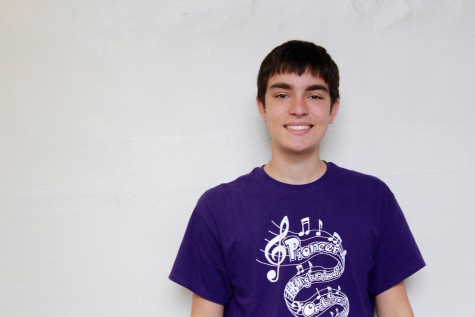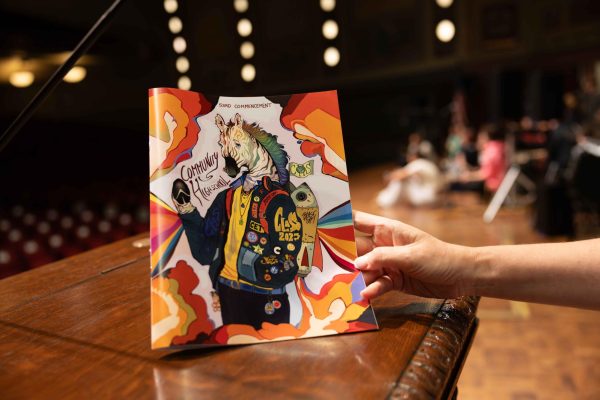Nobel Laureate Martin Karplus Discusses Molecular Biology, Opossums
Martin Karplus gives his lecture to a full amphitheater. In his presentation, Karplus discussed several molecules important to motion.
On Oct. 30, over 300 people poured into the Rackham Auditorium fourth floor amphitheater to attend Nobel Laureate Martin Karplus’s seminar, despite the strict seating capacity of 227. Frazzled ushers appeared on stage, announcing that anyone who had not found a seat had to leave immediately. Dozens still lingered in the aisles, and an usher quickly booked a viewing room on the third floor. The viewing room quickly overflowed as well, and several hopeful viewers wandered back to the amphitheater. “No, you can’t sit on the floor!” an usher barked into the microphone. “That’s not allowed!”
Finally, when the seating arrangements had been solved, an unfazed Karplus appeared on stage. “Raise your hand if you can’t hear me,” he deadpanned.
Karplus is a physical chemist who was born in Austria, but fled to the United States as a child to avoid the Holocaust. He earned his Ph.D. at California Institute of Technology under the legendary chemist Linus Pauling. Karplus joined the Harvard University Department of Chemistry and Chemical Biology in 1967, and rose to prominence for his research in chemistry and molecular biology; there is even a Karplus Equation with a Wikipedia entry. His illustrious career culminated in a Nobel Prize in Chemistry in 2013. Now a professor emeritus, Karplus still fills amphitheaters for his talks on his research.
Karplus’s lecture was entitled, “Motion: The Hallmark of Life. From Marsupials to Molecules.” He began by discussing opossums, the only marsupial in North America. Karplus explained the distinctive opossum behavior of “playing possum,” where opossums pretend to be dead when they sense danger. This mechanism is quite effective in repelling predators, who rely on the action of killing their prey. “When they see some animal that’s dead, they just leave it alone,” Karplus said of the predators.
The scientific term for playing possum is tonic immobility, and it results from complicated interactions in the hypothalamus, the nervous system and the endocrine system. This phenomenon occurs in animals, as well, and sometimes even occurs in humans. According to Karplus, women who are in danger of being assaulted can slip into tonic immobility. “So people say, ‘Well, why didn’t they run away?’ They couldn’t run away because they were in this state,” Karplus said.
Karplus soon moved on to the molecular origins and implications of animal motion. He discussed the structure and function of several biological molecules important to the process of motion, including myoglobin (a protein that stores oxygen), kinesin (a protein involved in several cellular processes) and ATP synthase (an important energy-providing enzyme).
Through his lecture, however, Karplus used several more examples of how the function of these molecules is visible in animal and human biology. For instance, dolphins need more oxygen to dive than they can store; their methods of motion, however, reduce their energy costs enough to allow them to dive. Karplus also touched upon his research in this field, and emphasized a few specific “eureka” moments. “There was a sense, even at the time, of something truly historic going on,” he said, describing his reaction to a simulation that was important to his Nobel Prize victory.
The amphitheater was still completely full by the time Karplus finished his lecture. He ended by discussing certain unsolved questions in molecular motion, and concluded, “I leave you with the idea that even at 85, you can go do something new.”










